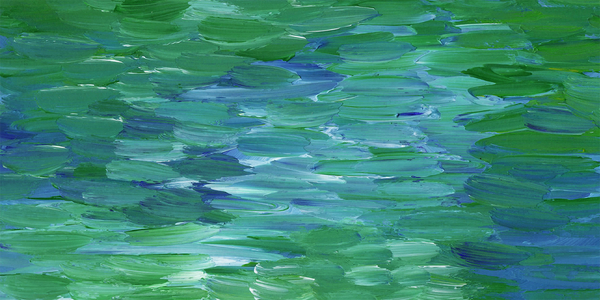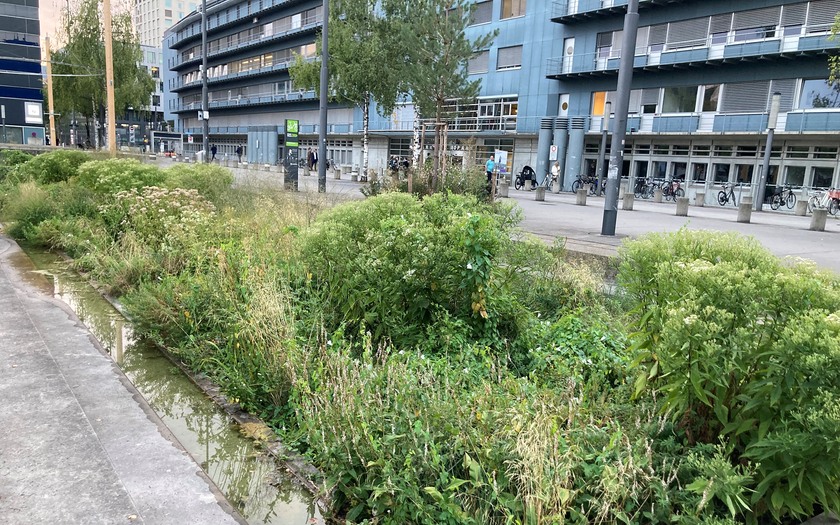News Detail
Blue-green biodiversity: recognise, conserve, promote
September 3, 2024
Biodiversity at the interfaces between water and land is particularly high. And it is under particular pressure. Because everyone wants to get to the water, needs water or wants to get rid of the water as quickly as possible.
The joint research initiative ‘Blue-Green Biodiversity’ (BGB) of the two institutes WSL and Eawag, funded by the ETH Board, has therefore been researching biodiversity at the interfaces of aquatic and terrestrial ecosystems since 2020. Today, Tuesday 3 September, the results will be presented to over 200 experts at the Special Info Day in Dübendorf. Here are three examples.
Biodiversity barely exists in many areas of politics
In addition to biologists and ecologists, environmental engineers, water experts and other specialists, environmental social scientists also looked into the topic as part of the BGB initiative. They searched for references to biodiversity in the minutes of sessions of the National Council and Council of States, legal texts, federal court judgements, expert reports, etc. The researchers ploughed through 440,000 documents and searched for terms such as ‘moor’, ‘fish ladder’ or ‘invasive species’. Their conclusion: only 1.6 % of all documents contain a reference to biodiversity. In many relevant policy areas, such as spatial planning or transport, biodiversity is barely mentioned. ‘In view of the fact that the conservation and promotion of biodiversity require coordinated measures in a wide range of policy areas, this is not good news,’ says Manuel Fischer, head of Eawag's Environmental Social Sciences department. ‘Unlike health insurance premiums or flooding, biodiversity is hardly ever a topical issue,’ he says. In addition, the topic is highly fragmented into sub-topics that are rarely discussed together: ‘Many people don't realise that the protection of amphibians and the construction of near-natural flood retention areas can be linked,’ says Fischer.
As versatile as a Swiss army knife
Wet, moist or alternately moist - blue and blue-green habitats are central to biodiversity in the city. As part of the BGB initiative, researchers have investigated what swims, crawls or grows along culverted streams and on newly created ponds or green roofs in the city of Zurich. They found a high diversity of species and were able to show that not only aquatic or semi-aquatic species, such as dragonflies or amphibians, but also birds, butterflies, grasshoppers and, above all, small invertebrates benefit from the enhanced habitats. ‘In addition,’ says WSL ecologist Marco Moretti, ’blue-green habitats and infrastructures have a key function for the distribution of many species. They form stepping stones and valuable corridors that strengthen resilient biodiversity.’ Environmental engineer Lauren Cook from Eawag goes even further: ‘In urban environments, well-designed blue-green infrastructure can fulfil many functions simultaneously - like a Swiss army knife,’ she says. Planted infiltration swales, for example, have the following benefits in addition to strengthening biodiversity: They
- are efficient reservoirs and release water in a controlled manner,
- can replenish the groundwater,
- reduce the overflow of wastewater into streams during heavy rainfall (if the water from 20% of a catchment area is retained, wastewater overflows can be reduced by 80%),
- help to reduce heat,
- can absorb CO2 and reduce greenhouse gas emissions,
- improve the quality of living and local recreation.
Tintenstriche - or where rock comes alive
Biologist Sabine Fink (WSL) and environmental chemist Elisabeth Janssen (Eawag) have taken a close look at a special kind of blue-green biodiversity: Striking dark to black, often moist streaks on rock faces in the mountains, called Tintenstriche (“ink stripe”). The most important inhabitants of these communities are cyanobacteria, which are among the oldest life forms on earth. The bacteria, also known as blue-green algae, can photosynthesise and are therefore able to enrich the environment with oxygen. Genetic analyses of the Tintenstriche have revealed an as yet unknown diversity of cyanobacteria. The researchers are now taking a closer look. This is also because some of the gene segments identified enable the bacteria to produce substances that can be toxic to other organisms. So-called cyanotoxins have previously been known from lakes, where they can occur during cyanobacterial blooms and have already led to bathing bans or deaths in dogs. Can snails or caterpillars, which feed on the ink line mountain crusts, metabolise these substances? Or do they even store the toxins in their own bodies to protect themselves from being eaten? Blue-green systems still harbour some secrets - and research questions.
Cover picture: Art work, Jael Klaus




